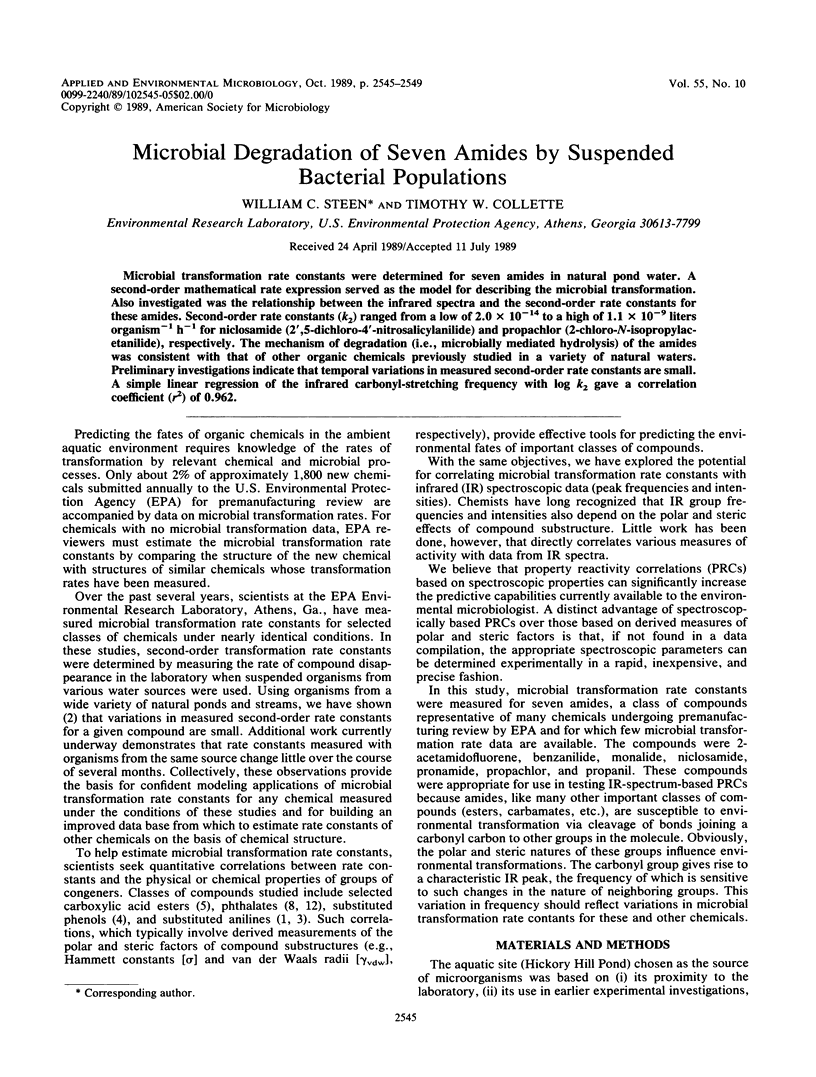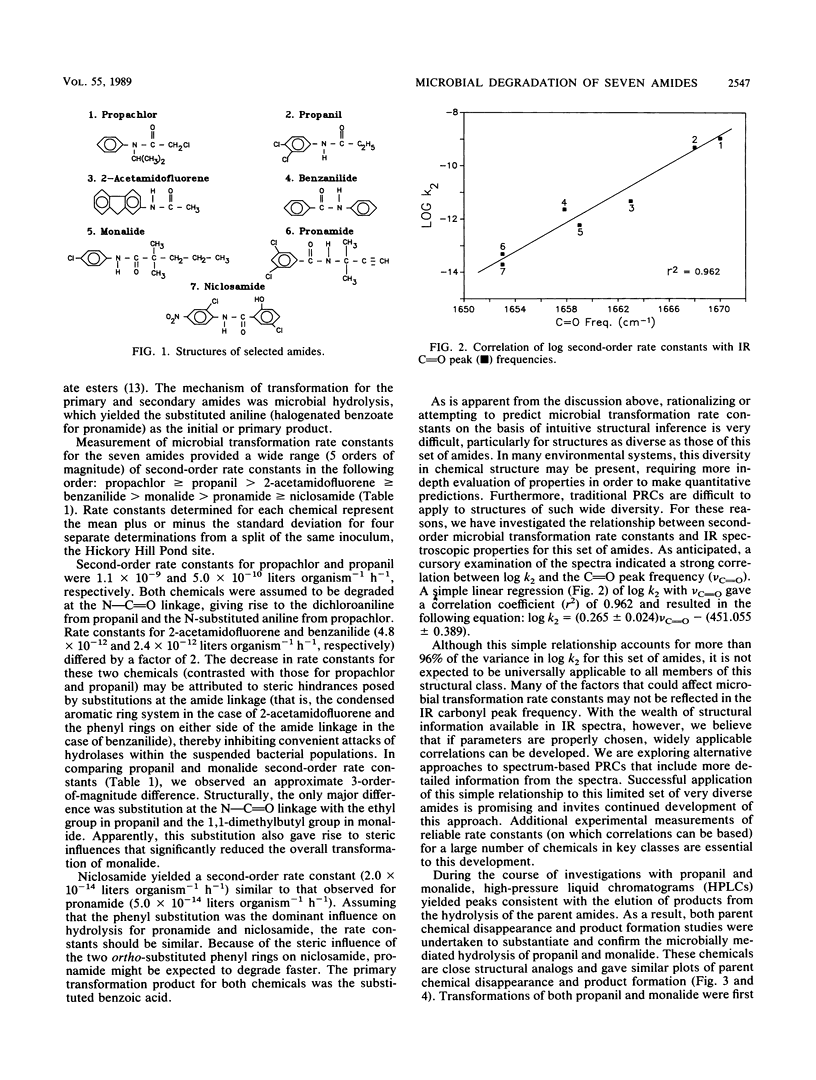Abstract
Microbial transformation rate constants were determined for seven amides in natural pond water. A second-order mathematical rate expression served as the model for describing the microbial transformation. Also investigated was the relationship between the infrared spectra and the second-order rate constants for these amides. Second-order rate constants (k2) ranged from a low of 2.0 X 10(-14) to a high of 1.1 X 10(-9) liters organism-1 h-1 for niclosamide (2',5-dichloro-4'-nitrosalicylanilide) and propachlor (2-chloro-N-isopropylacetanilide), respectively. The mechanism of degradation (i.e., microbially mediated hydrolysis) of the amides was consistent with that of other organic chemicals previously studied in a variety of natural waters. Preliminary investigations indicate that temporal variations in measured second-order rate constants are small. A simple linear regression of the infrared carbonyl-stretching frequency with log K2 gave a correlation coefficient (r2) of 0.962.
Full text
PDF




Selected References
These references are in PubMed. This may not be the complete list of references from this article.
- Paris D. F., Rogers J. E. Kinetic concepts for measuring microbial rate constants: effects of nutrients on rate constants. Appl Environ Microbiol. 1986 Feb;51(2):221–225. doi: 10.1128/aem.51.2.221-225.1986. [DOI] [PMC free article] [PubMed] [Google Scholar]
- Paris D. F., Steen W. C., Baughman G. L., Barnett J. T. Second-order model to predict microbial degradation of organic compounds in natural waters. Appl Environ Microbiol. 1981 Mar;41(3):603–609. doi: 10.1128/aem.41.3.603-609.1981. [DOI] [PMC free article] [PubMed] [Google Scholar]
- Paris D. F., Wolfe N. L. Relationship between properties of a series of anilines and their transformation by bacteria. Appl Environ Microbiol. 1987 May;53(5):911–916. doi: 10.1128/aem.53.5.911-916.1987. [DOI] [PMC free article] [PubMed] [Google Scholar]
- Paris D. F., Wolfe N. L., Steen W. C., Baughman G. L. Effect of phenol molecular structure on bacterial transformation rate constants in pond and river samples. Appl Environ Microbiol. 1983 Mar;45(3):1153–1155. doi: 10.1128/aem.45.3.1153-1155.1983. [DOI] [PMC free article] [PubMed] [Google Scholar]
- Paris D. F., Wolfe N. L., Steen W. C. Microbial transformation of esters of chlorinated carboxylic acids. Appl Environ Microbiol. 1984 Jan;47(1):7–11. doi: 10.1128/aem.47.1.7-11.1984. [DOI] [PMC free article] [PubMed] [Google Scholar]
- Paris D. F., Wolfe N. L., Steen W. C. Structure-activity relationships in microbial transformation of phenols. Appl Environ Microbiol. 1982 Jul;44(1):153–158. doi: 10.1128/aem.44.1.153-158.1982. [DOI] [PMC free article] [PubMed] [Google Scholar]


